 |
| Joshua Davey was once intent on becoming a minister, a plan that cost him his publicly funded scholarship to Northwest College. Now the plaintiff in a high-profile case before the Supreme Court, Davey decided to attend Harvard Law School upon graduating from Northwest.
|
The law regarding vouchers is in the midst of fundamental change. About a year ago, no one knew whether voucher programs could include private religious schools without running afoul of the First Amendment’s establishment clause. That clause prohibits “any law respecting an Establishment of Religion” and is popularly understood to create a “wall of separation” between church and state. Today, after the Supreme Court’s 2002 decision in Zelman v. Simmons-Harris, not only is it clear that voucher programs may include private religious schools, but it is quite possible that they must.
Indeed, the Supreme Court will decide a case this term, Davey v. Locke, which could resolve this very question. The lawsuit began when Washington State’s Higher Education Coordinating Board revoked a state-funded “Promise Scholarship” from Joshua Davey, who was then a student at Northwest College, a private Christian school in Kirkland, Washington. The scholarship was available to students from low- and middle-income families who finished in the top 10 percent of their high-school class and enrolled in one of the state’s accredited public or private colleges. However, in October 1999, the fall of Davey’s freshman year, the Board notified colleges that students majoring in theology were ineligible for the scholarship, citing a provision in the state constitution that bans public support for religious instruction. Davey, who planned to become a minister and had declared a major in “pastoral studies,” lost his scholarship and promptly sued the state.
By a 2-to-1 vote, the Ninth Circuit Court of Appeals overturned the state agency’s decision, holding that it “facially discriminates on the basis of religion.” The state “may not offer a benefit to all,” the Court concluded, “but exclude some on the basis of religion.” If the Supreme Court, as many expect, agrees with this reasoning, it would seem to follow that excluding religious schools from voucher programs is also unconstitutional. This would not end all legal challenges to vouchers, but it would constitute an enormous sea change in the law surrounding voucher programs. Describing the origins and direction of that change, as well as marking the legal battles that lie ahead, are the subjects of this essay.
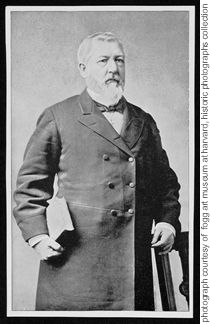 |
| While Speaker of the House in 1875, James G. Blaine introduced a constitutional amendment that would have prohibited any state from providing money to schools “under the control of any religious sect.” The amendment failed at the national level, but most states adopted laws with language modeled after Blaine’s proposal.
|
After Zelman
The transformation in the law regarding vouchers began last June with the Supreme Court’s historic Zelman decision. By a 5-4 vote, the Court upheld Cleveland’s voucher program, which offers a limited number of students the chance to attend private schools, including religious ones, at public expense. The Court determined that Cleveland’s program was formally neutral toward religion and that government aid reached religious schools “only as a result of the genuine and independent choices of private individuals.” As a result, the Court reasoned, the program did not violate the establishment clause’s prohibition on “advancing religion.” The Court’s decision, fairly read, is a sweeping endorsement of the proposition that voucher programs may include private, religious schools.
The Court essentially established a two-part test for judging voucher programs, and both parts are easy to meet. First, the program must be neutral with regard to religion. Under the Court’s interpretation of “neutrality,” this simply means that the formal criteria for selecting students and schools to participate in the program cannot be based on religion, nor can a program skew the choice toward religious schools by, say, providing more money for students who select religious schools. Importantly, it is legally irrelevant if most of the voucher students ultimately end up in religious schools, as was the case in Cleveland, where 96 percent of voucher students were attending religious schools. A voucher program, in other words, must be neutral in its design, but not necessarily in its impact.
The second part of the test is only slightly more difficult to meet. In addition to being neutral, voucher programs must offer individual students and parents a “genuine choice” among religious and secular schools. This is important, the Court explained, because allowing individuals to choose where to use public money defuses the charge that the government is supporting religion. Money that is spent at religious schools, under this view, arrives there not because of government direction, but rather because of an individual’s choice. As a result, the argument concludes, the government cannot reasonably be seen as endorsing religion.
The big question, of course, is, What represents a “genuine” choice? The Court did not define this term with much precision, but its discussion of the choices available to Cleveland students tells us much. In considering the options available to Cleveland students, the Court did not confine its analysis to the private sector. Since students in Cleveland could choose to attend a private school, a public magnet school, or a charter school, the Court reasoned that the existence of magnet and charter schools should be considered in assessing whether students have a genuine choice among secular and religious schools. This makes it considerably easier for voucher programs to meet the criterion of providing a “genuine choice.” Even if most of the private schools participating in a voucher program are religious, as long as some viable options exist within the public school system, the genuine choice requirement should be satisfied. Given that voucher programs are most likely to develop in urban districts, and given that most of these districts already operate both magnet and charter schools, the genuine choice requirement should not be much of an obstacle.
The secular options, moreover, need not be demonstrably better than religious schools. In the words of Justice O’Connor, who wrote at length on this issue in a concurring opinion, the secular options “need only be adequate substitutes for religious schools in the eyes of parents.” Tellingly, neither the majority nor Justice O’Connor seriously considered remaining in Cleveland’s neighborhood schools a viable option. This was not surprising, given that the main justification for the voucher program was the abysmal state of Cleveland’s regular public schools. The ironic implication, however, is that voucher programs may be on stronger constitutional footing in those places where they are arguably least needed-because the neighborhood schools are good. In such districts, the neighborhood schools should be considered one of the choices available among secular and religious alternatives. Once remaining in a neighborhood school counts as a genuine option, it would be virtually impossible to strike down a voucher program even if all of the private schools participating in the voucher program happened to be religious.
The Blaine Amendments
Although Zelman gives a bright green light to states looking to include religious schools in voucher programs, it does not resolve all of the potential legal challenges awaiting such programs. The next round of legal skirmishing will involve the so-called Blaine amendments, which exist in roughly two-thirds of state constitutions (see Figure 1). The amendments are named after the 19th-century presidential aspirant James G. Blaine, who, while Speaker of the House in 1875, introduced a constitutional amendment that would have explicitly prohibited any state from providing money to schools “under the control of any religious sect.” Introduced at a time of widespread Protestant hostility toward the Catholic Church, the amendment’s thinly veiled purpose was to bar public money from supporting Catholic schools. It fell just shy of the votes needed at the federal level, but a number of states soon included provisions in their constitutions modeled after Blaine’s proposal. Congress, moreover, required a number of states to adopt such provisions as a condition of their admission into the Union.
The precise wording of Blaine amendments varies from state to state, but they are all fairly explicit in barring aid to religious schools. Florida’s constitution, for example, declares, “No revenue of the state or any political subdivision or agency thereof shall ever be taken from the public treasury directly or indirectly in aid of any church, sect, or religious denomination or in aid of any sectarian institution.” Related provisions in other state constitutions prohibit the “compelled support” of taxpayers for religious worship or instruction.
On their face, the Blaine amendments appear to place a formidable obstacle in the way of including religious schools in voucher programs. Voucher opponents are counting on them in their effort to thwart voucher plans in state courts, and voucher proponents are fretting that they won the battle in the Supreme Court but may ultimately lose the war. In my view, however, the Blaine amendments do not represent a serious threat to voucher programs that include religious schools.
For one thing, it is likely that a number of state courts will interpret these amendments narrowly and conclude that they do not prohibit voucher programs. The Ohio and Wisconsin state supreme courts have already followed this path. Like the Supreme Court in Zelman, the Ohio and Wisconsin courts reasoned that voucher programs do not provide money for the benefit of religious schools but rather for the benefit of students and their parents, who may independently choose to use the voucher at a religious school. Other courts may follow Ohio and Wisconsin’s lead, especially in light of the Zelman decision and the increasing popularity of voucher programs.
Not all courts will be as generous. A lower court in Florida, for example, has already concluded that the state’s voucher program violates the state constitution, a decision that is now before a Florida state appeals court. Other state courts have indicated that they, too, will read their Blaine amendments as prohibiting aid to religious schools, regardless of whether the aid is given directly by the state or indirectly through parents and students. The big question is, What happens then?
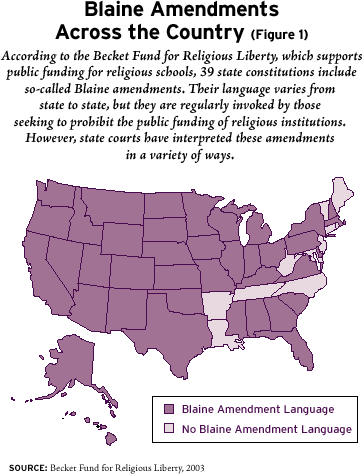 |
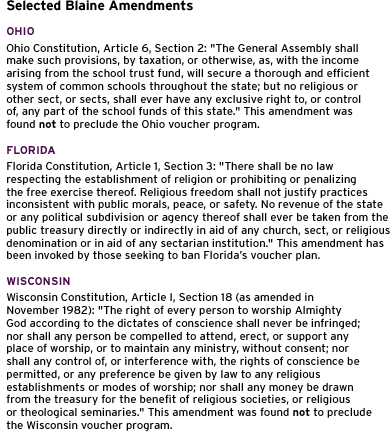 |
Unconstitutional Amendments?
Here is where it gets really interesting. What will likely happen is that the Blaine amendments themselves will be deemed to violate the federal constitution. The reason is fairly straightforward. Before Zelman, prohibiting religious schools from participating in voucher programs might have been thought necessary to avoid violating the federal establishment clause. After Zelman, however, there is no obvious justification for treating religious schools differently from secular ones in the context of a voucher program. This means that excluding religious schools may violate not one but three separate constitutional provisions: the equal protection clause, the free exercise clause (which protects the free exercise of religion), and the free speech clause. The equal protection clause and the free exercise clause both prohibit discrimination on the basis of religion unless there is some compelling reason for the discrimination. A court could easily conclude that excluding religious schools from voucher programs constitutes discrimination on the basis of religion.
The free speech clause might not seem relevant at first, but it too could be read to require the inclusion of religious schools in voucher programs. The Court has interpreted this clause to bar discrimination on the basis of viewpoint. In an analogous case, it relied on the free speech clause to strike down the University of Virginia’s (UVA) refusal to allow a religious organization run by students to receive funds that were made available to secular organizations. Doing so, the Court concluded, represented discrimination on the basis of the organization’s religious viewpoint. It is true that state governments may have a more substantial interest in regulating the content of K-12 education than they do in regulating the speech of university student organizations. But the structure of voucher programs is similar to the program at UVA. Voucher programs offer public funds to private schools, which differ in the messages they seek to convey through their curricula, just as UVA offered funds to various student organizations. To allow a diverse array of private schools while excluding schools that promote a religious message could be seen as discrimination on the basis of the viewpoint of religious schools.
Notice that these arguments do not suggest simply that Blaine amendments might run afoul of the U.S. Constitution. They also suggest that a state legislature’s decision to exclude religious schools, made independent of any Blaine amendment, would also be unconstitutional. In other words, if any one of these three arguments is successful, all voucher programs that exclude religious schools, for whatever reason, may be unconstitutional.
Admittedly, there are plenty of ambiguities in how the Court has interpreted and applied the equal protection, free exercise, and free speech clauses. In particular, the fact that voucher programs involve a subsidy to religious schools could complicate the analysis, because the Court has occasionally accepted the argument that the failure to provide a subsidy for an activity or institution does not itself constitute impermissible discrimination. In the abortion context, for example, the Court has allowed state and federal governments to provide money to poor women who carry their pregnancies to term but to deny it to women seeking an abortion. In spending its own money, the Court reasoned, a government can choose which activities to subsidize, and the failure to subsidize a constitutionally protected activity-such as obtaining an abortion-is not necessarily unconstitutional. Using similar reasoning, the Court could ultimately conclude that it is permissible to fund secular but not religious schools, even though students have a constitutional right to attend religious schools.
The Court has also on occasion allowed the government to engage in viewpoint discrimination by choosing to subsidize some messages but not others. The basic idea behind cases of this sort, which are hard to reconcile with cases like the one involving UVA, is that the government should be able to decide what sort of messages it wishes to convey, and it should be able to convey those messages by subsidizing certain private speakers (and their messages) but not others. To take another example from the abortion context, the Court has allowed the government to make funding to family-planning services conditional on their promise not to provide information about abortion. Such a condition was permissible, in the Court’s view, because the government should be allowed to make a value judgment favoring childbirth over abortion and to implement that judgment through the allocation of public funds. Again, similar reasoning could be used to justify a government’s decision to fund secular but not religious education, which could be described as just another value judgment.
Lower courts and ultimately the Supreme Court accordingly have some room to reach whatever conclusion they favor. Political judgments and preferences, rather than purely legal ones, may determine how these questions are resolved. We will have some answers soon enough, as the Davey case, now pending before the Court, presents many of the same issues. There, Washington State relied on its own Blaine amendment as justification for excluding theology students from participating in the state’s public scholarship program. Given the conservative bent of the current Supreme Court, I am fairly confident that it will conclude, as the court below did, that such exclusion unconstitutionally discriminates on the basis of religion. And if Washington’s scholarship program is unconstitutional, it is hard to see why excluding religious schools from publicly funded voucher programs would not also be unconstitutional.
Even if this prediction proves incorrect, there is a final reason why the Blaine amendments might be unconstitutional. This has to do with the fact that most, if not all, of the amendments were adopted because of hostility toward the Catholic Church. The equal protection and free exercise clauses, as suggested above, generally prohibit laws that discriminate on the basis of religion or that discriminate against a particular religion. The history of the Blaine amendments suggests that they were designed to discriminate against Catholic schools.
Although this legal argument may succeed in some state courts, voucher proponents seeking to overturn Blaine amendments on this basis face a number of practical difficulties. First, the fight would have to occur state by state, with courts looking into the history of specific state amendments. Second, and more troublesome for voucher advocates, a court might conclude that the passage of time or a more recent rewriting of a state constitution has cleansed whatever improper motive lay behind the original adoption of the Blaine amendment. Moreover, even if a court were to strike down a Blaine amendment on these grounds, there would be nothing to prevent a state’s passage of precisely the same provision, provided that the reenactment was not motivated by anti-Catholic bias. For all of these reasons, voucher proponents will certainly be pinning their hopes on a favorable decision in Davey.
One final wrinkle must be noted. About ten states, including California, Colorado, and Massachusetts, have provisions in their constitutions that prohibit aid not just to private religious schools, but to all private schools. Colorado’s constitution, for example, provides: “No appropriation shall be made for . . . educational or benevolent purposes to any person, corporation or community not under the absolute control of the state, nor to any denominational or sectarian institution or association.” These provisions, which have gone virtually unnoticed in the voucher debates thus far, represent a much more serious obstacle to voucher programs because they do not discriminate on the basis of religion. It is possible, of course, that state courts will interpret these provisions to allow aid to flow indirectly to private schools, through the use of vouchers. But if courts interpret these provisions strictly, the only option for voucher proponents would be to amend the state constitution. This might seem like a far-fetched possibility, but it is actually a realistic option in many states, where amending the constitution, while not simple, has proved much easier than trying to amend the federal Constitution.
Indeed, Colorado recently enacted a voucher program, and voucher proponents are already at work to amend the Colorado constitution to remove the blanket prohibition on aid to private schools. In the meantime, however, voucher opponents have filed suit alleging, among other things, that Colorado’s program runs afoul of the state constitutional ban on aiding private schools.
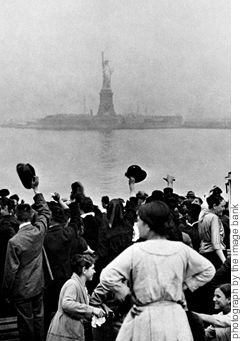 |
| Most, if not all, of the 19th-century Blaine amendments were adopted because of hostility toward the Catholic Church and the immigrants who professed this faith.
|
Regulating Voucher Schools
A separate and equally vexing set of questions facing voucher programs has to do with government regulation of private schools. States may want to regulate schools that accept vouchers in at least one of two ways. First, given the popularity of the accountability movement, states may require voucher schools to follow state academic standards and administer standardized tests. Second, they may enact laws that protect prospective students and teachers from discrimination based on certain characteristics, such as race, gender, religion, or sexual orientation.
As for the first concern, some states may not have much of a choice when it comes to monitoring the performance of students in voucher schools. In about 20 states, courts have concluded that students have a state constitutional right to an “equal” or “adequate” education. To guarantee that right, legislatures are often required to ensure a certain level of funding to public schools and to provide a realistic opportunity for students in those schools to meet certain academic goals. It is quite possible that this duty would also extend to voucher schools. To the extent that the right to an equal or adequate education is a personal right, held by each student, the legislature may be required to ensure that any school that a student attends with public funds delivers a constitutionally sufficient education.
Consider the voucher program in Florida. A recent constitutional amendment states that students in Florida are entitled to a “high quality” education. Under Florida’s program, vouchers are available to students attending schools that have received a grade of “F” for performance for two consecutive years. Presumably such schools are not providing a high-quality education. Private schools in Florida are not currently graded or otherwise monitored in the way that public schools are. The question is whether simply providing vouchers to students, who can use them to attend better public schools or private schools, is sufficient to satisfy the legislature’s obligation to provide a high-quality education to all students. This is a hard question.
The legislature’s duty might be satisfied as long as students have a “genuine choice,” to borrow a phrase from Zelman, to attend at least one school that delivers a high-quality education. But even this limited duty would require the state to regulate at least some private schools if there are not enough seats in “good” public schools. And it is quite possible that a court would go further and require the state to ensure that all participating voucher schools deliver a high-quality education. It would follow that whatever public schools are required to do in order to ensure a high-quality education, voucher schools may also have to do. It could also follow that, to the extent that a certain level of funding is required to guarantee a high-quality education, the value of the state voucher must not fall below the constitutionally required level of funding per pupil.
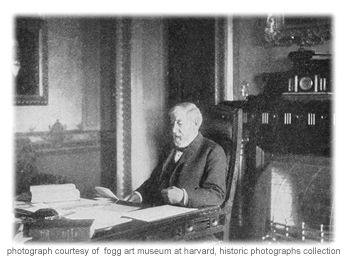 |
| A court might conclude that the passage of time or a more recent rewriting of a state constitution has cleansed whatever improper motive lay behind the original adoption of the Blaine amendment.
|
Defensive Plays
Through the mechanism of standards and testing, states could come to regulate what is taught in private voucher schools. Through antidiscrimination statutes, they could come to regulate who is allowed to teach in and attend voucher schools. The question is whether voucher schools are constitutionally immune from any or all of these potential regulatory intrusions. Voucher schools can be expected to rely on at least three federal constitutional rights in an effort to block regulation: the free exercise clause, the First Amendment right to association, and the free speech clause.
A free exercise claim is perhaps the easiest to analyze. According to a fairly controversial Supreme Court decision about a decade ago, the free exercise clause does not prohibit a state from applying religiously neutral and generally applicable laws to religious institutions or individuals. Although some strange quirks exist within this rule, it seems safe to conclude that the free exercise clause would not entitle private religious schools to an exemption from generally applicable antidiscrimination or academic regulations.
A harder question is posed by the right to association. The Supreme Court recently breathed new life into this somewhat limp right when it decided that the Boy Scouts had a First Amendment right to exclude an openly gay scoutmaster. Such exclusion, the Court concluded, was necessary to preserve the Scouts’ right of “expressive association.” To force the Scouts into accepting a gay scoutmaster, according to the Court, would require the Scouts to endorse a message contrary to their core principles. It is not at all clear how far this rejuvenated right will ultimately extend-whether, for example, it would allow the Scouts to send a message of racial intolerance by excluding African-American scoutmasters. But it is not hard to see that such a right, were it extended to private schools, could provide a constitutional excuse for the decision to exclude certain teachers or perhaps even certain students. If a conservative religious school, for example, wished to condemn homosexuality, it would not be much of a stretch for a court to shield the school using the right to association.
Even if a court were to extend the right of expressive association to private schools, this right is not absolute. It can be overridden by laws or regulations that serve a compelling state interest. In the Boy Scouts case, the Court found that preventing discrimination against homosexuals by private organizations was not a sufficiently compelling state interest. Given the importance of education, however, it may be that preventing discrimination in schools would be more paramount. Again, there is enough play in the joints of the law to enable courts to reach their preferred result, for whatever reason. The resolution of this question may thus depend on the political makeup of whatever court confronts it and on the groups seeking antidiscrimination protections. Courts may be very reluctant, for example, to condone the notion that private schools have a First Amendment right to exclude African-American students or teachers. They may be less reluctant to recognize a right to exclude homosexuals.
 |
| If the Supreme Court, as many expect, voids Washington State’s decision to revoke Joshua Davey’s scholarship, it could constitute an enormous sea change in the law surrounding voucher programs.
|
The final potential challenge to state regulations rests on the free speech clause. Private schools might assert that certain curricular requirements burden their right to free speech. Private schools might also object to regulations like the one governing the Cleveland voucher program, which prohibits voucher schools from teaching “hatred of any person or group on the basis of race, ethnicity, national origin, or religion.” Although a distasteful prospect, it is possible that at least some schools may wish to teach hatred, or at least intolerance of other groups.
Whether the free speech clause would protect such schools turns on the analysis provided above. If excluding religious schools from participating in voucher programs represents impermissible viewpoint discrimination, then requiring voucher schools to refrain from disseminating certain messages would also be impermissible. But if the government can selectively fund certain schools based on its agreeing with their messages, then regulating their content should not be a problem.
Given the uncertainty in the law and the range of regulations that a state may wish or be forced to apply, it is difficult to say how the battle over regulations will be resolved. But its outcome could be as important as the battle over the Blaine amendments. The reason is that the more regulations a state imposes on private schools as a condition of participating in voucher programs, the less attractive such participation will be to some, if not many, private schools. Moreover, those private schools that do participate in voucher programs may wind up looking and acting a lot like traditional public schools. This may ensure some quality control and provide crucial protection to some students and teachers who might otherwise be excluded from private schools, but only at the cost of stealing some of the justification-namely, that private schools are different and diverse-for providing vouchers in the first place.
-James E. Ryan is a professor of law at the University of Virginia.


